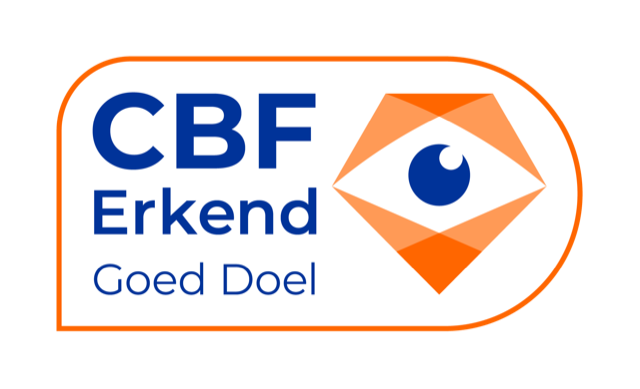Abstract
This article investigates symptoms of post-traumatic stress in victims of long lasting cases of traditional and/or cyber victimization. The article presents findings from semi structured interviews with nine victims; eight girls and one boy, five Norwegian and four Irish—who had experienced either traditional or both traditional and cyber bullying. The informants were chosen because they had been victims of closed bullying cases lasting from 1–7 years. The findings showed that victims who had experienced only traditional bullying reported fewer symptoms of post-traumatic stress than “poly victims”, i.e., those who had experienced both traditional and cyber victimization. Furthermore, differences were detected between these two groups—victims of traditional bullying and poly victims—regarding when and where the symptoms were experienced and the kind of sub-symptoms that were described. It is important to be aware of these different symptoms when working with children who have experienced traditional and/or cyber victimization to ensure that these children obtain support customized to their needs. The findings could also have practical implications for anti-bullying programs that work with victims involved in both ongoing and closed cases of bullying.
The main goal of this qualitative study is therefore to explore whether and how victims of closed cases of long-term bullying report symptoms of post-traumatic stress. A second goal is to see whether there are differences in the symptoms reported by victims of traditional and/or cyber bullying.
Findings
Two of the informants reported experiencing only traditional victimization, while seven reported experiencing both traditional and cyber victimizations. None reported experiencing only cyber victimization. All the informants, independent of type of victimization, provided descriptions that could be categorized into some of the main categories of symptoms of post-traumatic stress. However, differences were detected between the victims of traditional bullying and the poly-victims regarding the kind of symptoms they experienced and when and where they experienced the symptoms. The presentation of the findings will be structured according to the main nodes: intrusive memories and avoidance. These categories will further be divided into the mentioned sub-nodes dependent on the symptoms described by the informants.
Fear and Worrying
The informants who had experienced traditional victimization described fear related specifically to what might happen during recess: “I was always thinking about what would happen during recess, what could happened, what would happen, if I was going to be by myself or not?” (Norwegian girl, 13). According to the informants who had experienced traditional victimization, the fear and worrying they described was related to the school setting only.
The poly-victims also reported being scared in school: “I’m scared of them, they were very very popular in my class.” The young girl who said this also described being scared of her phone when on her way home: “I was just too afraid to look at it” (Irish girl, 17). Another informant described being frightened in school: “I was kind of thinking maybe they’ll do this, maybe they’ll do that, like so it was kind of like still in the back of my mind, you know.” Some of the poly-victims also described experiencing fear in their spare time: “I’d kind of be like eh, just thinking, ‘is she plotting something?’ or like yeah. Like if I saw she was typing, I’d be like panicking or something. I’d be thinking maybe she is doing something even bigger now, maybe she’s thinking of something bigger to do” (Irish girl, 13). For the poly-victims, fear and worrying was related to both the school setting and their spare time.
Problems Concentrating
Having problems concentrating seemed to be mainly related to the school setting: “I was always looking out, I had eyes in my neck in a way, always following everything else but what the teacher was saying” (Norwegian girl, 14), “I was just like keeping my head down, just not paying attention to anything. I was, like I was occasionally barely hearing the teacher calling my name to hear if I was alright” (Irish girl, 18). The differences between school and home were also described: “At home, I do not have that much to concentrate about, but when it comes to school, it has ruined my grades a little bit. Everything that has happened” (Norwegian girl, 12). Problems concentrating were reported by both informants having experienced traditional victimization and poly-victims.
Although problems concentrating seemed to be mostly related to the school setting, one informant described how thinking about bullying affected his concentration all the time. In response to the question “Did you think about this when not on the internet as well?,” the informant said, “All the time. Every day. 24/7. I couldn’t sleep, couldn’t eat. Could barely go to school” (Irish boy, 18). This informant had experienced both traditional and cyber victimizations.
Trouble Sleeping
Over half of the poly-victims reported having difficulties sleeping: “I can almost not remember sleeping” (Norwegian girl, 17) and “I’ve had trouble sleeping. I slept a couple of nights, then I almost didn’t sleep at all; I was awake all night and only slept for a couple of minutes” (Norwegian girl, 12). In addition, one informant described how thoughts about the victimization affected her sleep: “Like if it just happened that day, I’d probably like be just thinking about it, but like eventually go to sleep” (Irish girl, 13). Trouble sleeping was described only by the poly-victims.
- Published:
Download hier het hele rapport “All the Time, Every Day, 24/7”: A Qualitative Perspective on Symptoms of Post-traumatic Stress in Long-Term Cases of Traditional and Cyber Victimizations in Norway and Ireland (Ida Sjursø, Hildegunn Fandrem & Erling Roland)
Source International Journal of Bullying Prevention volume 2, pages139–148(2020)
Tip van de redactie
Heb je haast? Navigeer dan snel naar:
► Scholen & Professionals Kenniscentrum Pesten in het Onderwijs
- Of navigeer direct naar de informatie per functionaris: Schooldirectie & MT / Anti-pest coördinator / Leerkracht / Mentor / Ouderraad & MR
- Leerlingen & opvoeders: Kinderen & Jongeren (Leerlingen) / Ouders & Opvoeders
► Sportverenigingen Kenniscentrum Pesten in de Sport
- Of navigeer direct naar de informatie per functionaris: Bestuurders / Coaches, Trainers & Begeleiders / (Top)Sporters & Scheidsrechters
- Jonge leden & ouders Kinderen & Jongeren (Leerlingen) / Ouders & Opvoeders
► Werkgevers Kenniscentrum Pesten op het Werk
- Of navigeer direct naar de informatie per functionaris: Directie en bestuurders / HRM / MT en Leidinggevenden / Medewerkers / Ondernemersraden / Vertrouwenspersonen
► Ouderen Kenniscentrum Pesten in Woonzorgcentra

Breng snel een bezoekje aan ...
► Kenniscentrum (Klassiek) Pesten
► Kenniscentrum Online pesten (cyberpesten)
► Kennisbank & Downloadcentrum o.a. Beleid & Factsheets / Handleidingen / Lesmaterialen / Posters / Wetenschappelijke Onderzoeken
► Ik word gepest, wat kan ik doen
Stichting Stop Pesten Nu is het enige Erkende Goede Doel tegen Pesten in Nederland!







